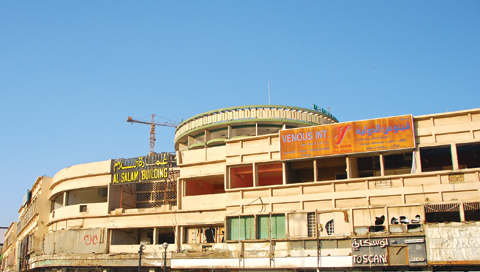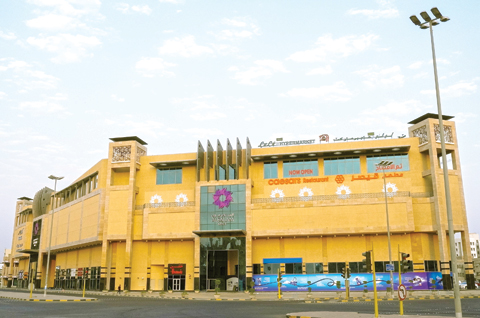 The old Salam Building was built in the 1960s at the intersection of Salem Al-Mubarak Street in Salmiya.
The old Salam Building was built in the 1960s at the intersection of Salem Al-Mubarak Street in Salmiya.As you move along SAM Street, or Salem Al-Mubarak Street, in Salmiya, you'll notice a clear manifestation of continuous urban development. This lane became the high street of Kuwait after the discovery of oil.
In the pre-oil era, Salmiya was mostly inhabited by the Awazem tribe and known by a different name. But when the area within the boundaries of the three walls of Kuwait City became overpopulated, some families including members of the ruling family and other families like Al-Musallam, Al-Qana'at and Al-Hamad moved further out, triggering the development Salmiya.
However, after the oil boom, construction of villas on Salem Al-Mubarak Street was halted, while some villa owners demolished their homes to build multi-storey buildings to house foreigners who came to work and trade in Kuwait.
In the 1950s, Salem Al-Mubarak Street became a commercial hub and symbol of multiculturalism. The buildings took foreign and modern shapes. One of these architectural gems was the Al-Salam Complex (also called Al-Salam Building), owned by Saud Sahood Al-Mutairi. The green-colored building was constructed in the 1960s and had a unique cylindrical shape. It was a precedent for its age, seared in the minds of the generation who grew up witnessing Kuwait's economic and cultural development.
Sadly, this building wasn't considered a historical landmark by law, which only recognizes structures built before 1920. Amending the law will not be adequate to protect our urban legacies, because many buildings are private properties under the sole discretion of their owners. Al-Salam Complex was demolished and replaced by an eponymous 7,696-sq-m shopping mall. The mall contains 116 stores and opened its doors last year.
Notably, Bayt Lothan (House of Lothan), which is considered a pre-oil historical building and a beacon of creativity in the dissemination of culture and arts to this day, has been earmarked for demolition and will be rebuilt as yet another shopping mall in Salmiya, angering local artists and historians.
 -Salam Building has been replaced with the new Al Salam Mall. — Photos by Athoob Al-Shuaibi
-Salam Building has been replaced with the new Al Salam Mall. — Photos by Athoob Al-ShuaibiIn the end, not every old building holds historical weight and not every historical landmark is preserved. Thinking positively, the new shopping centers could be catalysts for encounters between various community groups. The advantage of space allocated indoors against the harsh weather is likely to be a better alternative to the old open shops. Nonetheless, laws and regulations must be updated to preserve the vestiges of the past and the historical treasures of Kuwait's olden days.
By Athoob Al-Shuaibi










